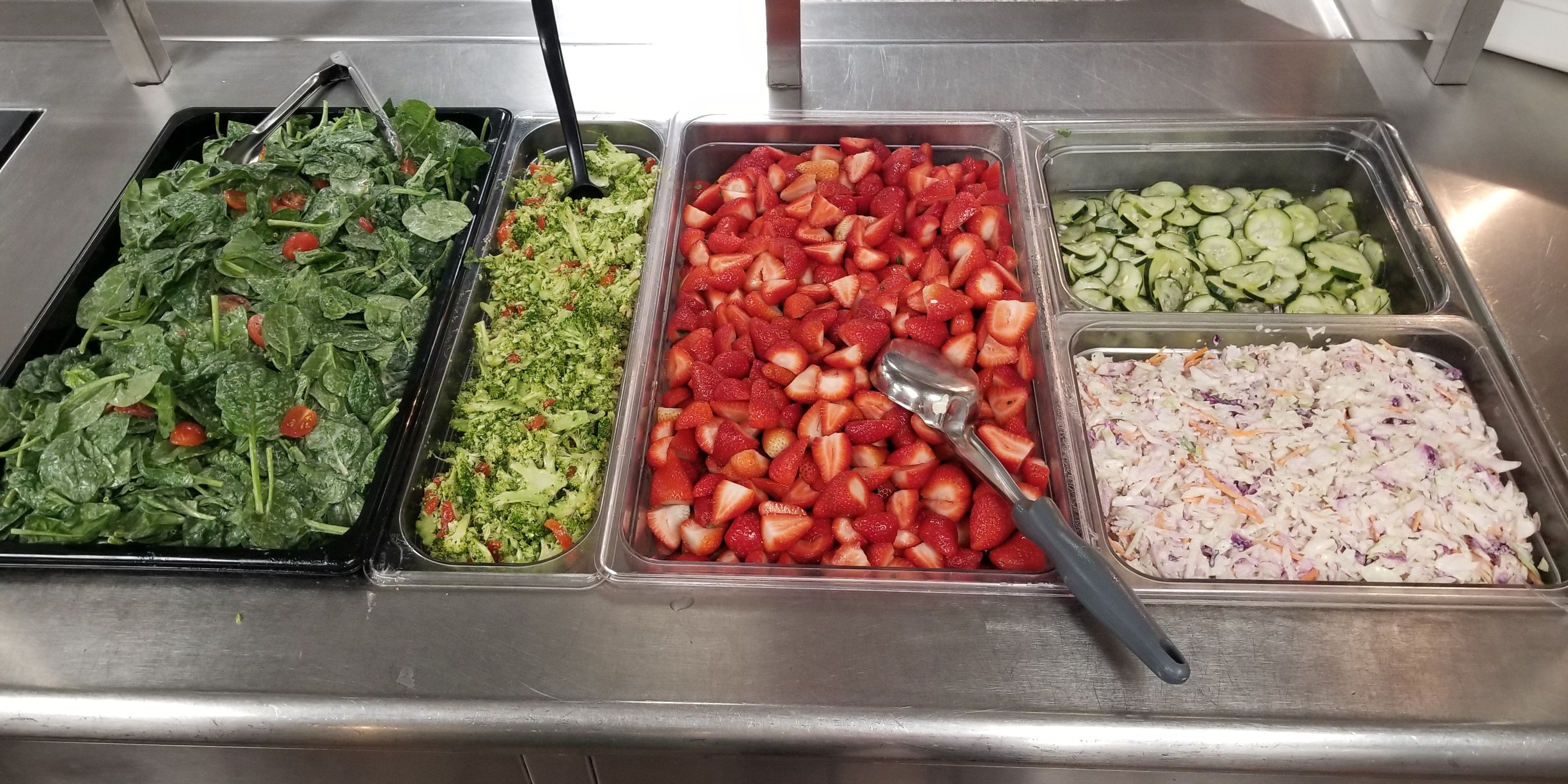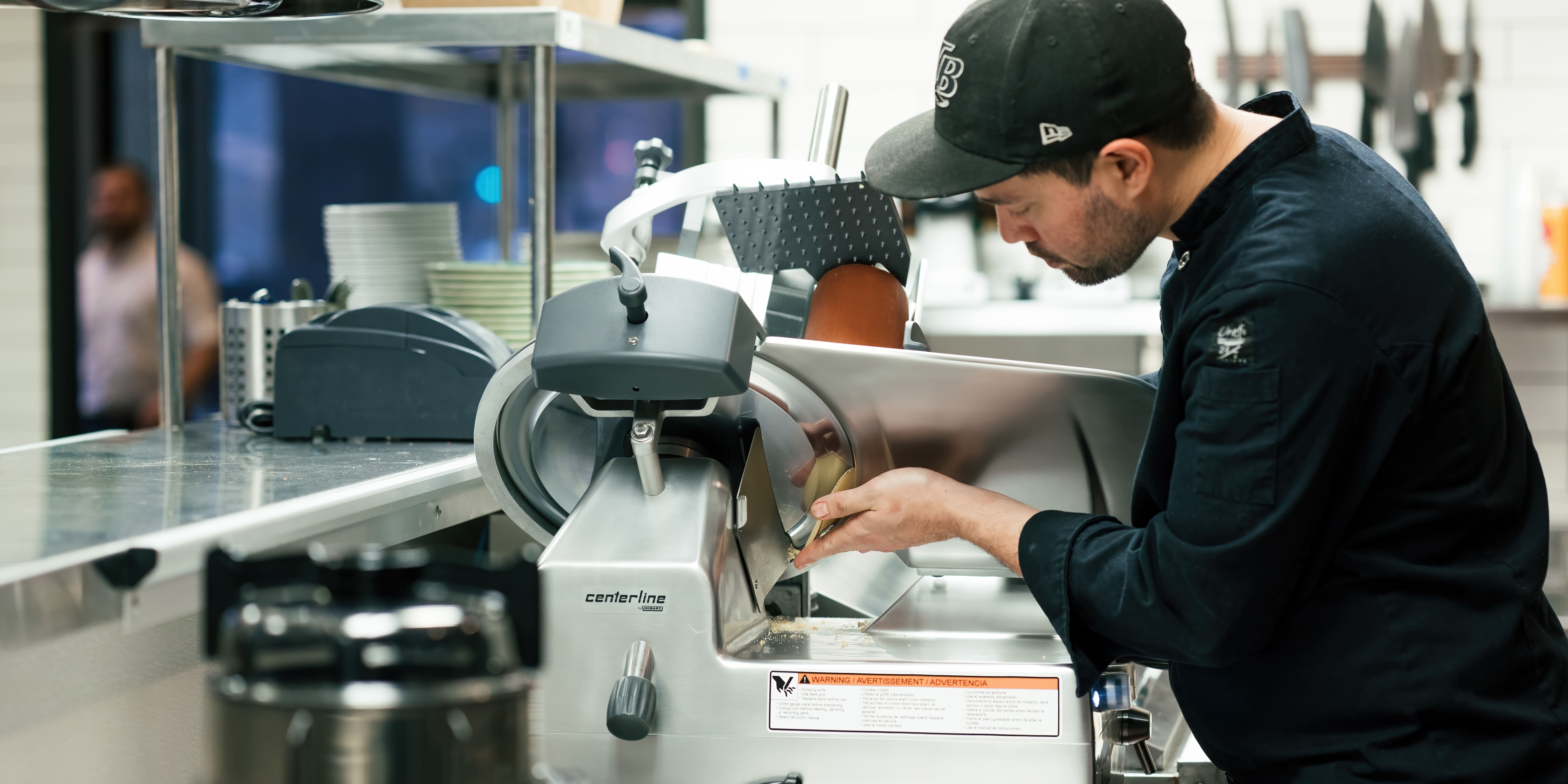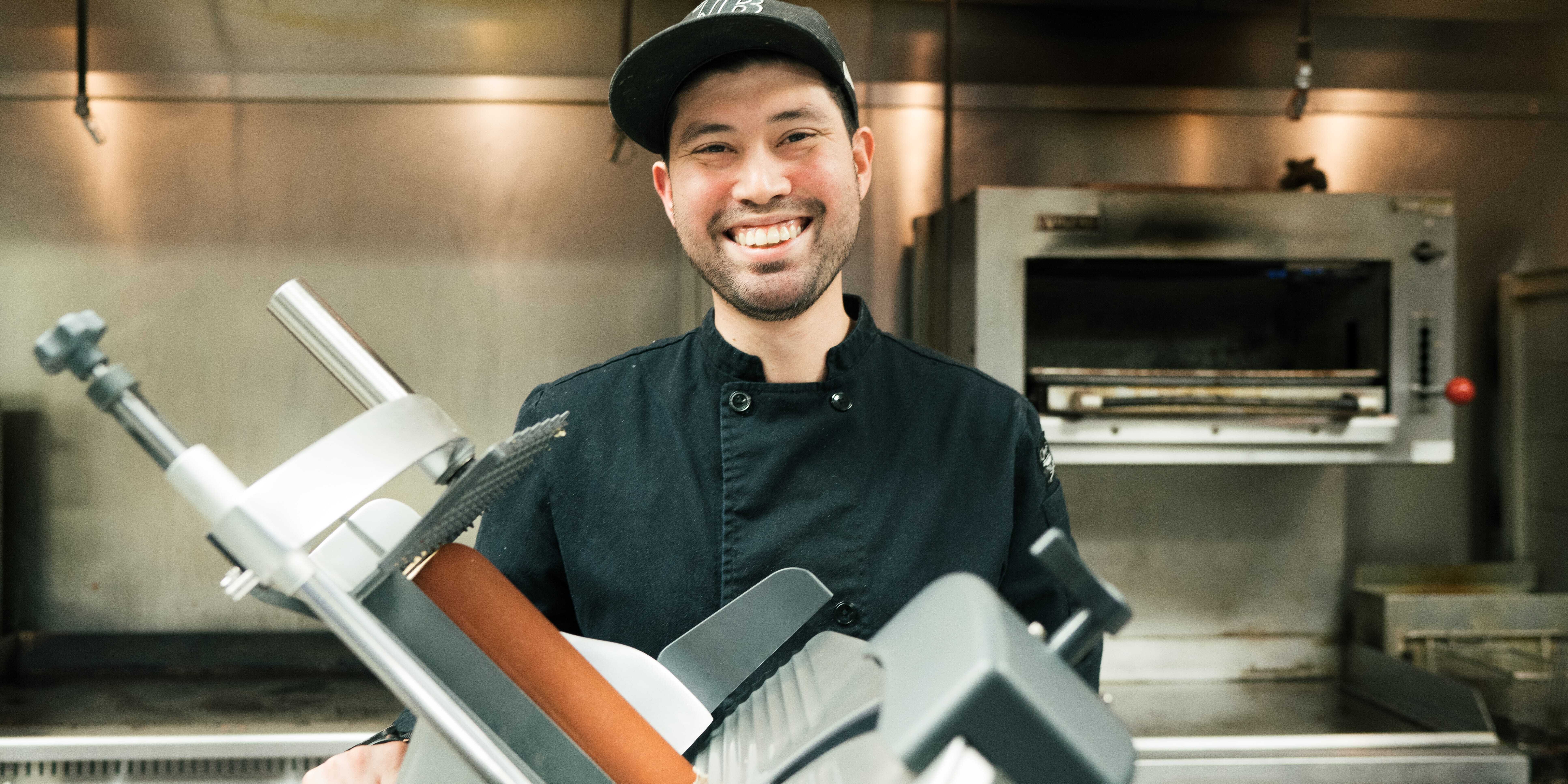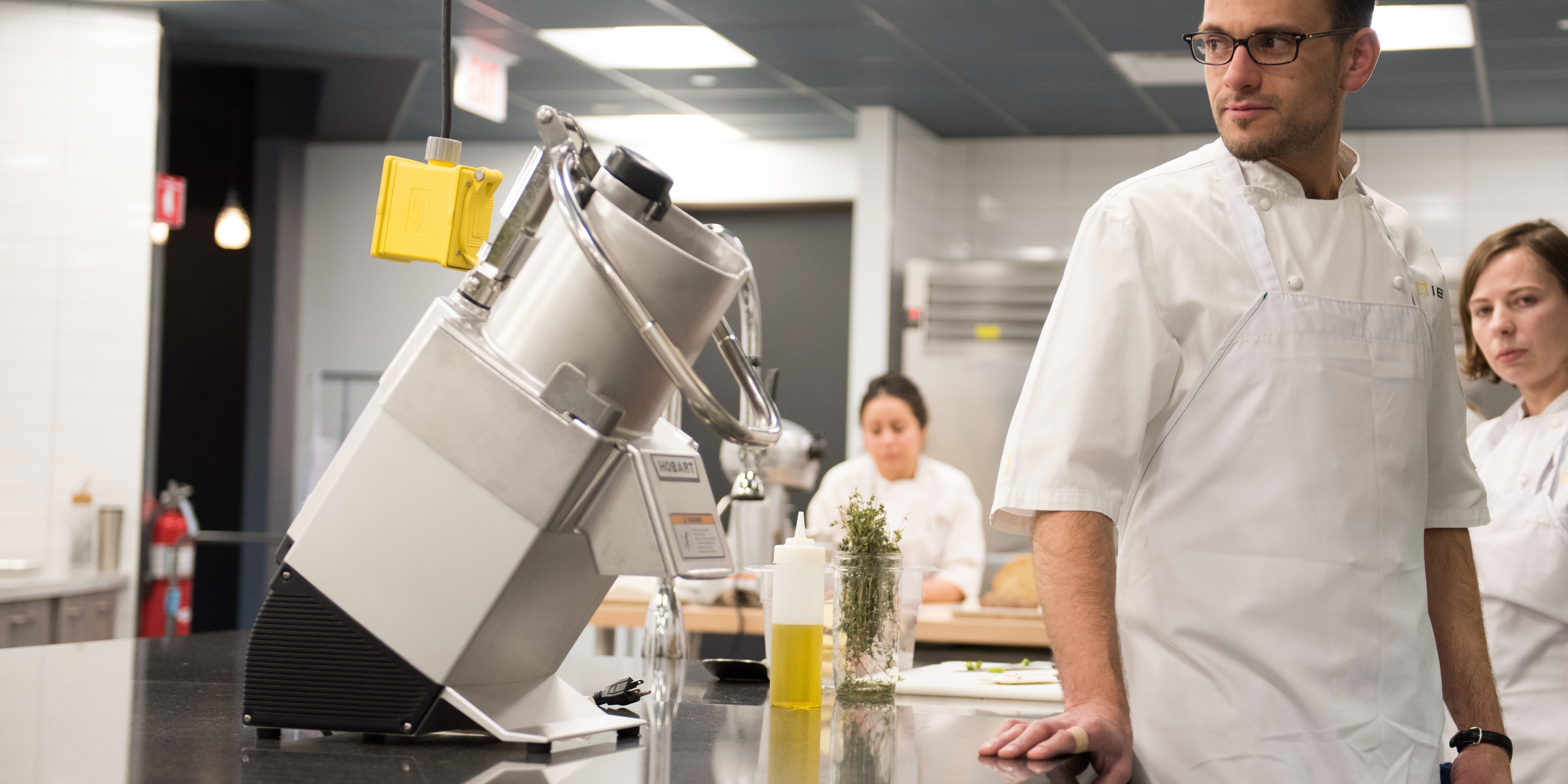At Victor Central School District, they have a saying: “Fresh is Best” — and they lead by example for their pre-K to twelfth grade students. Their food service program consists of 25% of from-scratch menu items with ingredients sourced from local farms, with many of those being served in the high school cafeteria. They have the goal of reaching 40% by the end of the school year and expanding more scratch cooked meals to lower grades.
“When you have control over what it is that you're creating and developing, then you know what ingredients are going into it,” said Alexandra TePoel-Dewitt, director of food services. “So, you can make sure that the ingredients are whole and fresh.”
The district, which consists of five schools sharing a main campus in Victor, N.Y., was a recent recipient of a Hobart grant provided through the School Nutrition Foundation. They were selected based on their demonstrated need for new food prep equipment, as well as their commitment to increasing the number of from-scratch meals for their 4,300 students.
With the help of a new Hobart HS9 automatic slicer and Hobart 84186 food cutter (more commonly called a buffalo chopper) from the grant, TePoel-Dewitt and her staff have been able to simplify prep work and bring new menu items to students.
New recipes and nutrition education
At the heart of the Victor Central School’s food program is locally sourced food. Through a combination of funding from the Department of Defense program and a New York State grant, TePoel-Dewitt allocates dollars specifically for the purchase of fresh fruits and vegetables, plus meat, from area farms. She also relies on the Cornell Cooperative Extension who provides contact information for local vendors who are approved to buy products from for the school.
The availability of this support, combined with brainstorming, trial and error, and teamwork has brought new recipes to Victor Central School students. TePoel-Dewitt and her Production Cook, Sharon Beaver, and Lori Alfred, salad production cook, put their heads together to develop from-scratch menu items that could be easily prepped with the Hobart equipment — and appeal to students.
“Sharon makes all the home-cooked items across the district, all our scratch cooking,” explained TePoel-Dewitt. “That includes our sauces, our pastas, our rice, any of our new recipes that we are developing.”
Among those recipes is a Chicken Tikka Masala made with diced chicken and herbs, along with peppers and onions sourced from local farms and processed in the Hobart buffalo chopper by attaching the VS9 vegetable slicer.
The verdict from the intermediate and senior high school students?
“We didn't serve any fewer meals than we normally do, so the students were really kind of excited to try something new,” TePoel-Dewitt said. “We’ve been doing a lot of experimenting, and the students seem interested in the new items. We have this wonderful new equipment to make it happen.”
Staff has been using the buffalo chopper with the vegetable slicer attachment to make sweet potato cinnamon chips and carrot fries that TePoel-Dewitt said, “went over like crazy.” They also use this food cutter for shredding roasted turkey for a Turkey BLT Shredder sandwich.
The buffalo chopper has an 18-inch stainless steel bowl with a 15-lb capacity, so it helps make quick work of shredding for this recipe.
Also new favorites among the students are the Philly Cheese Steak sandwich and Italian sub. Staff used the HS9 automatic heavy-duty slicer for slicing meat from local farms for both. Because the slicer is automatic, it allows staff to slice meat while also focusing on other tasks in their nearby workstation.
In addition to offering from-scratch meals to students, TePeol-Dewitt also works to educate students on the value of fresh foods over processed foods. She serves as a preceptor for Cornell University students who are majoring in nutrition management. These interns create age-appropriate nutrition education materials and teach four to five classes to inform students about healthy eating.
Reaping the benefits
Being able to prep fresh ingredients for from-scratch recipes with the Hobart equipment has brought several benefits to the Victor Central Schools’ food program. First, it’s providing students with healthier choices that they enjoy.
“They say it takes three times to really find out if the students like a recipe, but I’ve given samples out to the students when they come through the line,” said TePoel-Dewitt. “Nine times out of the time they think it’s good and ask for more.”
TePoel-Dewitt feels that the from-scratch options appeal to students for varied reasons. Some may be prompted by marketing the school does. They have signs in their cafeteria promoting the value of fresh foods for academic achievement and explaining the advantages of healthy eating, including staying full longer than when consuming empty calories from processed foods. For others, she sees it as a deliberate choice to eat healthy, especially among junior and high school athletes and also younger students.
“We have a wrap room in our senior high school that offers made-to-order salads, wraps and sandwiches. These areas are always super busy,” she explained. “We also offer salads and freshly made sandwiches for our lower grade levels that go over well.”
Purchasing fresh, whole fruits, vegetables and meat to process with the slicer and buffalo chopper also saves the food program money.
“There’s a cost attached to buying pre-prepped ingredients based on the convenience. It could be $10 to $20 more a case compared to us doing the work ourselves,” explained TePoel-Dewitt. “Buying whole local meats like roast beef, for example, is saving us two to three dollars a pound.”
Additionally, the school sees less overall waste by purchasing fresh ingredients. Not only does whole produce last longer than pre-packaged fruits and vegetables, but the students also choose the from-scratch menu items more often because they look and taste fresher. Students want these meals so there isn’t much left over at the end of the day.
When there are leftovers, TePoel-Dewitt and her staff make sure to re-serve or repurpose ingredients to further reduce waste.
“We can make casseroles or use leftover beef to put on a pizza or make a sub or Philly Melt special,” she said. “We have a lot of creative ways to turn it into a burrito. And we have pizza dough that we proof and bake. We'll roll that out and then we'll make calzones, which the students really like.”
Prepping ingredients in-house with the Hobart equipment helps make the most of available staff. Like many districts, Victor Central Schools have been challenged by labor shortages in recent years. Having new equipment minimizes prep time and allows staff to focus on making other meals or taking care of various tasks in the kitchen.
A bonus for the quick prep time? Quality.
“The quality of our produce and meats is better because it takes less time to prep,” TePoel-Dewitt said. “So, the less time it takes to prep something, the sooner we can get it into a safe place — let's say the cooler or the oven or whatever we’re doing with the product that day.”
Looking forward
As the school year continues and for future school years, TePoel-Dewitt and her staff are committed to developing more from-scratch recipes and serving fresh, locally-source food to students. They’ll rely on Hobart, which they say is a brand they trust for its reliability and performance and their go-to pieces of equipment.
“We're going to continue to foster our relationships with our local vendors and farms. And we're going to continue testing new meal options with our students,” said TePoel-Dewitt. “It would be amazing if we could develop a team that would do mostly scratch cooking. It would be fantastic.”
They also plan to focus more from-scratch efforts with their younger students, particularly pre-K and kindergarteners, who TePoel-Dewitt says can be hesitant to try new foods — but when they do, are often pleasantly surprised. In many cases, they ask for more.
“We are trying really hard to do the best by our students,” TePoel-Dewitt said. “We pride ourselves on offering fresh products to our students and we want to ensure that their health is our number one priority.”
About the Author
 Grace Strotman is the marketing & K-12 segment specialist for Hobart – Food Preparation Products. She has been with Hobart since 2020 and is responsible for marketing communications for the full line of Hobart food preparation equipment, with an added focus on the K-12 segment. See all her blogs here.
Grace Strotman is the marketing & K-12 segment specialist for Hobart – Food Preparation Products. She has been with Hobart since 2020 and is responsible for marketing communications for the full line of Hobart food preparation equipment, with an added focus on the K-12 segment. See all her blogs here.





-min.jpg)





